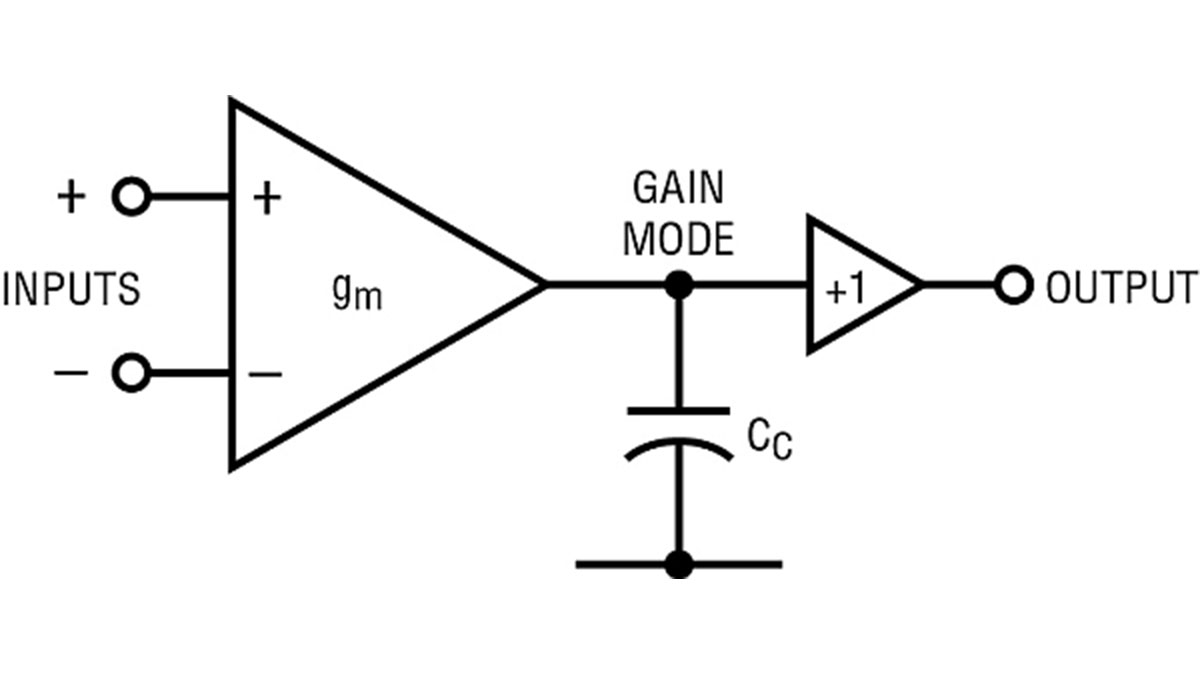We analog designers take great pains to make our amplifiers stable when we design them, but there are many situations that cause them to oscillate in the real world. Various types of loads can make them sing. Improperly designed feedback networks can cause instability. Insufficient supply bypassing can offend. Finally, inputs and outputs can oscillate by themselves as one-port systems. This article will address common causes of oscillation and their remedies.

Some Basics
Figure 1a shows the block diagram of a non-rail-to-rail amplifier. The inputs control the gm block which drives the gain node and is buffered at the output. The compensation capacitor Cc is the dominant frequency response element. The return of Cc would go to ground if there were such a pin; however op amps traditionally have no ground and the capacitor current will return to one or both supplies.
Figure 1b is a block diagram of the simplest amplifier with rail-to-rail output. The input gm’s output current is sent through a “current coupler” that splits the drive current between the output transistors. Frequency response is dominated by the two Cc /2s, which are effectively in parallel. These two topologies describe the vast majority of op amps that use external feedback.
Figure 1c shows the frequency responses of our ideal amplifiers, which display similar behavior although they are electrically different. The single-pole compensation created by gm and Cc gives a unity-gain-bandwidth product frequency of GBF=gm/(2p Cc). The phase lag of these amplifiers drops from -180 to -270° around GBF/Avol, where Avol is the open-loop amplifier DC gain. The phase hangs in at -270° for frequencies well above this low frequency. This is known as “dominant pole compensation,” where the Cc pole dominates the response and hides various frequency limitations of the active circuitry.
For more detail: Does your op amp oscillate
